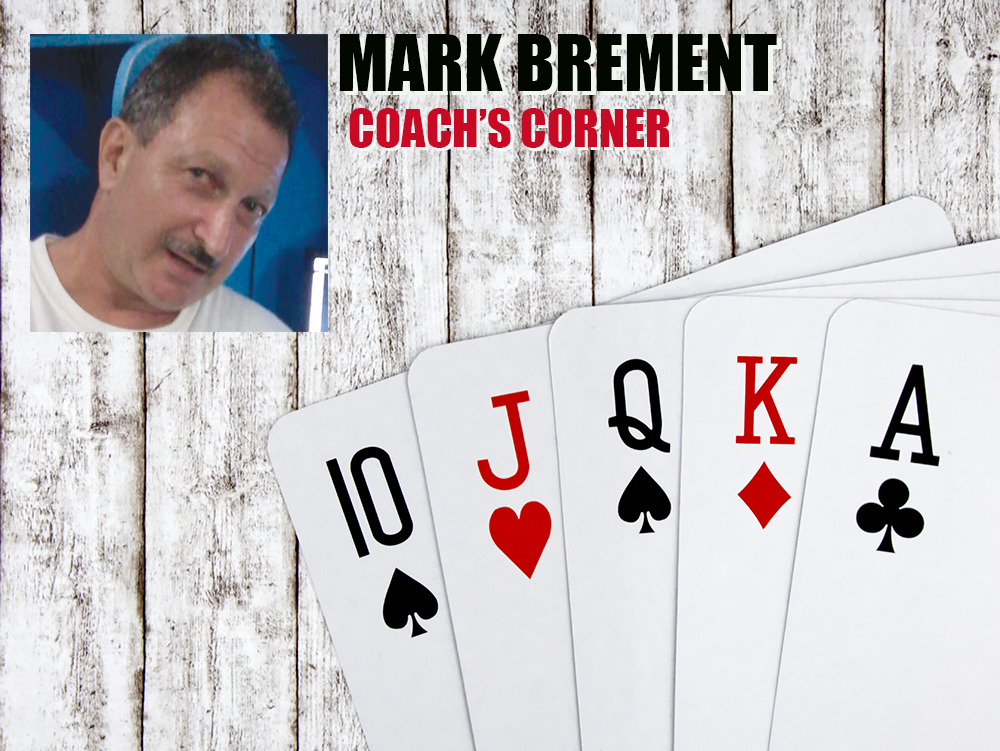We’re utilizing online sit-n-go tournaments to take our live tournament play to the next level. We’re addressing a nine-player SNG with top three cashing.
Quick summary: Part 1 was play loose and chip up in the early stage. Part 2 saw us change gears when the blind structure hit 75-150, which is the middle stage. Part 3 examined different approaches to take depending on our chip count. Part 4 taught us to knuckle down on the bubble. Based on equity charts, it doesn’t pay to risk your stack. We must cash at all costs.
Congratulations, you’re in the money. You mucked A-10 to a push (on the bubble) and watched pocket threes take down A-J. Had you called, not only would you have been a dog, but you would’ve bubbled. This is a mistake. As your coach, it’s my job to make sure you understand situations. Incidentally, as stated in last month’s column, calling the push with A-A or K-K is the only acceptable play, with a slightly wider range if you’re low in chips.
We’re down to three players. Our goal is to take down more than our fair share of first-place finishes as 40-45 percent would be fantastic. There are 13,500 in chips on the table. Blinds have increased to 150-300 and in a few minutes they’ll be at 200-400. We can change gears again. Increase our aggressiveness and reap the reward.
We’re keeping accurate records of our play. We’ve jumped our in-the-money rate from 36 percent, which is strong, to 44 percent. When considering the strong competition, this makes you world-class. This is a tough number even at the smaller stakes. What happened to the good old days when poker was easy? A few points to think about:
• Play three heads-up matches a day. Many players aren’t comfortable playing short-handed. This exercise will hone your instincts for the kill.
• Super-turbos are a form of SNG where we’re almost in a push-or-fold mode of play from the get-go. This type of game can be used to help you understand the math part of the game, which many players can improve.
• The Independent Chip Model. Opponents are young, they know what this is and all information is noteworthy. Your job is to understand ICM. The movie A Beautiful Mind is based on John Nash and he happens to be the brains behind this theory on risk and behavior and optimum action.
• Nash Equilibrium: Look it up. Understand it. You now have some homework. The better you understand this series, the more success you’ll have in the big multitable events. Don’t forget, you need a coach. I know a good one.
— Mark Brement has spent 15 years teaching and coaching all facets of poker, including at Pima Community College. Email him at pokermoses@phxpoker.com.




